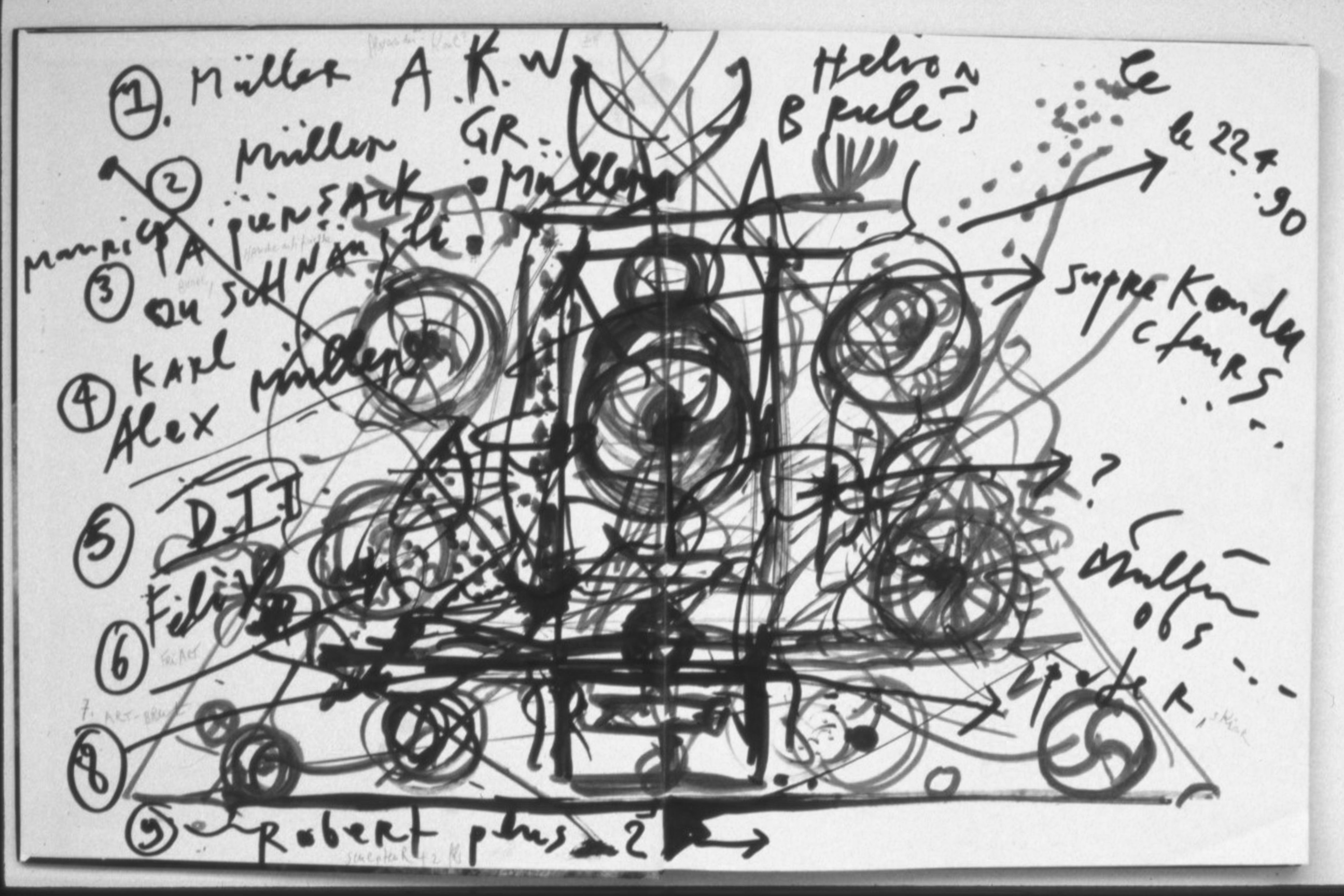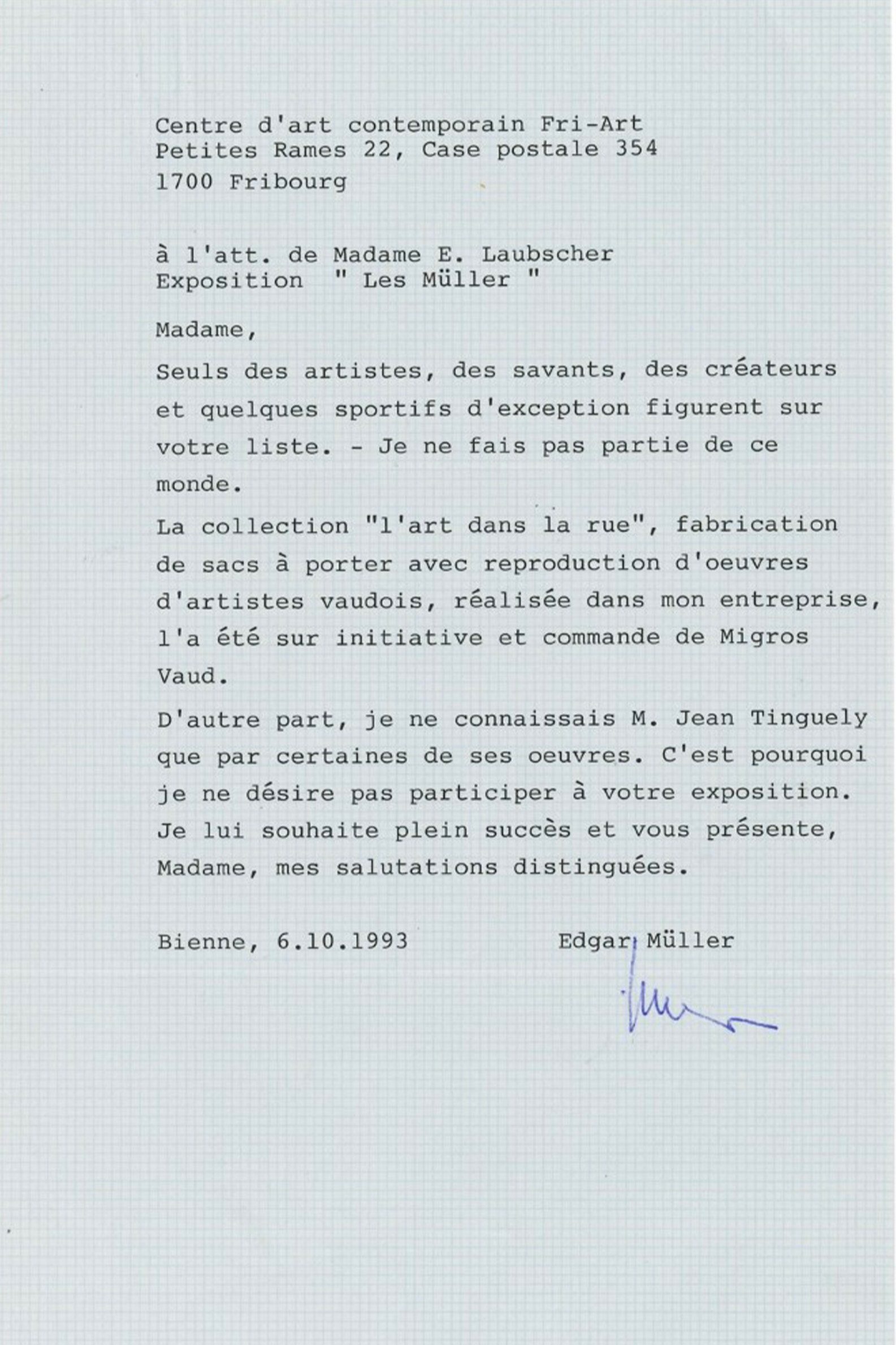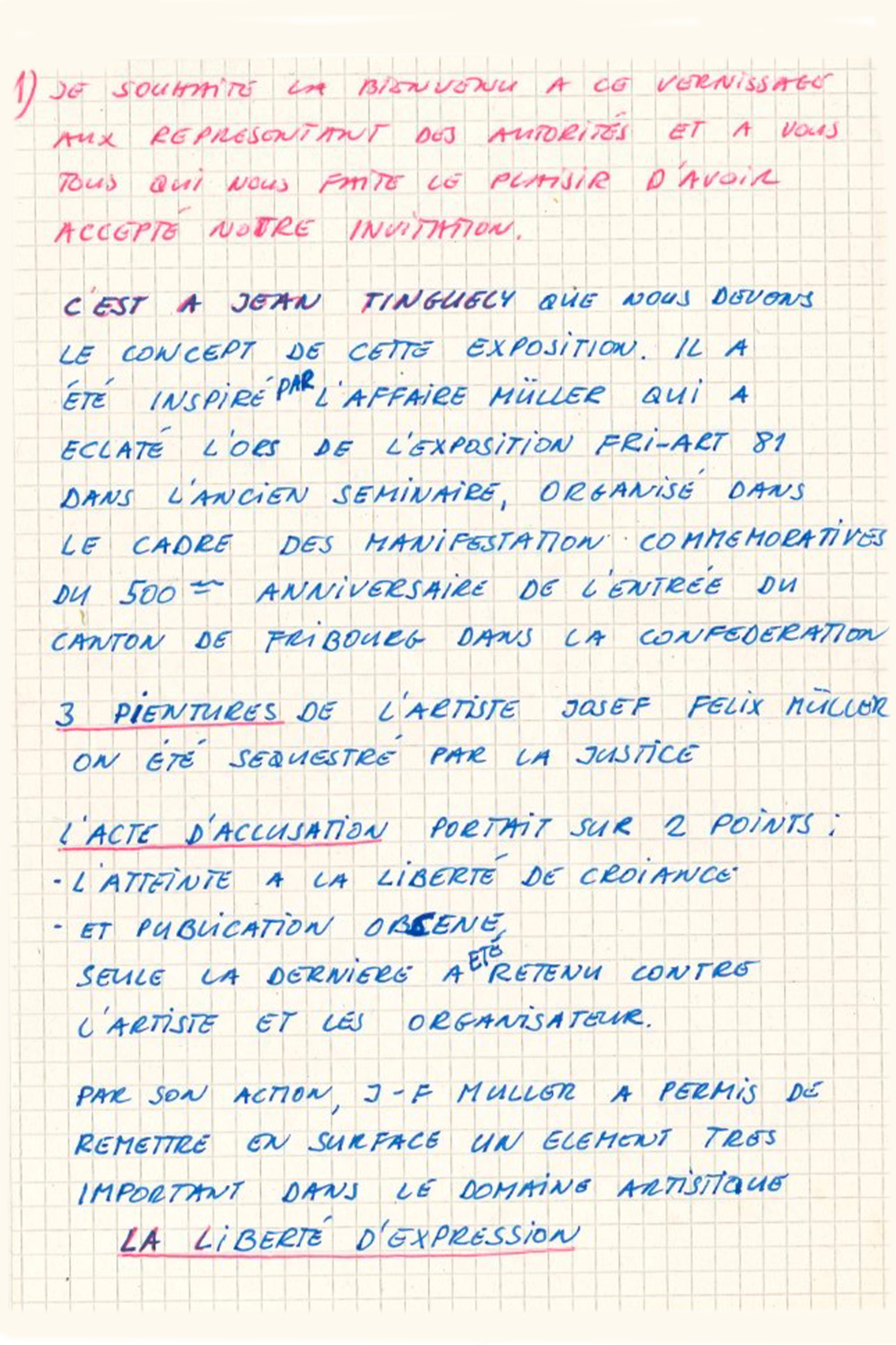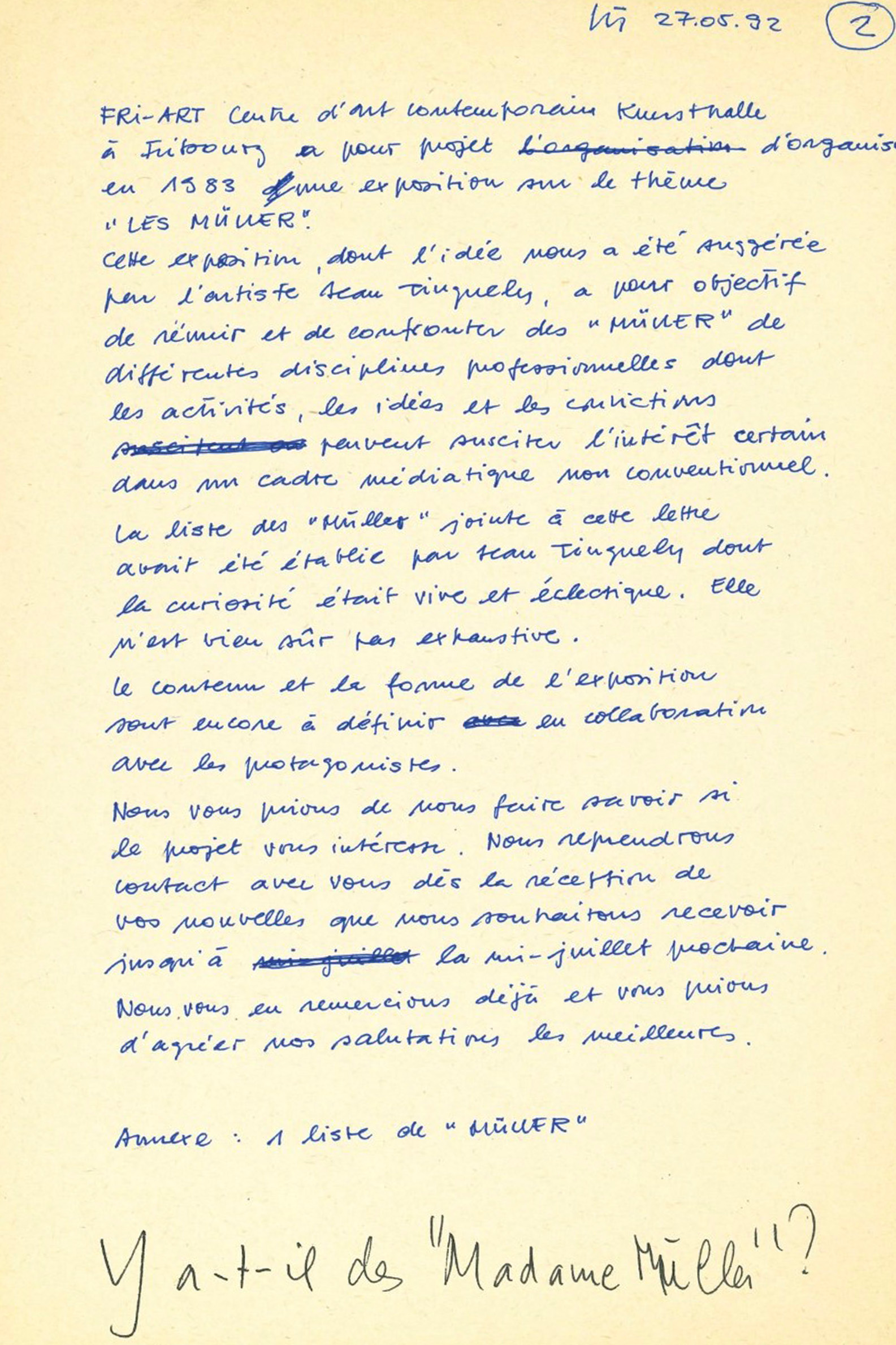1993: Les Müller, a Tinguely style inventory

“Is this really art?”, asked the surprised daily Freiburger Nachrichten when reporting on the Les Müller exhibition that assembled objects and representations from almost 50 different figures in the worlds of art, science and sport, all named Müller. La Liberté opined that it would have been better to locate the exhibition in an ethnographic museum rather than an art gallery. These comments show the extent to which the art scene’s way of working was unfamiliar to the Fribourg public. Indeed, 1990s artists were showing a growing interest in their sociocultural environment, exploring it with methods inspired by sociology and ethnography.
With the Les Müller exhibition, the curators turned themselves into researchers. They sought out people named Müller who had achieved the out of the ordinary. By taking the name Müller as their starting point, they were able to deploy a panorama of society and transform the exhibition space into a “museum of contemporary humanity”, to borrow the expression used by the Journal de Genève. According to Michel Ritter, it was the exhibition, serving as the documentation of this research, that was the true work of art: “This exhibition must be viewed in its globality, as an entire work, without, of course, forgetting the individuals that make it up.”
The research carried out at Friart did not however aim to be objective. Rather it served as a parody of science, of its classification and its pretention to objectivity, as the catalogue notes tongue in cheek: “Like the statistician carefully selecting the targets for their survey, such that they be both representative and arbitrary, the organiser of this exhibition has used this NAME-tool to carry out their own survey by offering up an arbitrary section of Swiss society.” It was in the tradition of other works critical of institutions, such as Musée d’art moderne – Département des aigles by the Belgian artist Marcel Broodthaers. Broodthaers had exhibited everyday objects alongside artistic objects that had eagles on them, with the aim of questioning the role of museums as the “judges” of what was (or was not) art.
But why the name Müller? The idea for the exhibition came from Jean Tinguely, who wished to pay homage to Josef Felix Müller, “artiste à scandale” of Fri-Art 81, and other out of the ordinary Müllers from the world of art, science and sport. In effect, Tinguely was of the opinion that we are all artists. This enlarged conception of art, according to which, far from being isolated, art is very much part of society, imposed itself as of the 1960s. Taking this idea as its starting point, the Les Müller exhibition constituted a critical questioning of science and art, demonstrating indeed that art is not something to be shut up in museums but also exists outside. In the same way, contemporary art is not only concerned with itself but rather interests itself in the whole of society, as stated by Friart: “The Centre of Contemporary Art aims to encompass the dynamism of the society in which we live – this is what sustains art and what art is a reflection of.”
Text written in collaboration with Andrea Walker, presented as part of the exhibition Friart est né du vide. L’esprit d’une Kunsthalle, MAHF Museoscope, 27.08–17.10.2021.
Translation: Jack Sims


